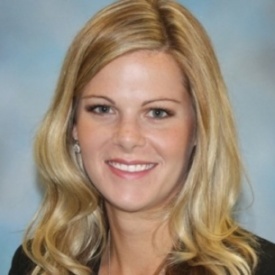Spotlight on Dr. Katherine Ruger, Assistant Dean
 Dr. Katherine Ruger is the Assistant Dean of Michigan State University’s admissions department. As the leader of the admissions, recruitment and outreach teams, she ensures that the applicant pool remains competitive, the application process is clear and interviews are successfully conducted. Dr. Ruger spoke with Liaison International to tell us about life for MSU’s admissions team, an inspiring story about an applicant who stood out from the crowd and the role that technology plays in her office.
Dr. Katherine Ruger is the Assistant Dean of Michigan State University’s admissions department. As the leader of the admissions, recruitment and outreach teams, she ensures that the applicant pool remains competitive, the application process is clear and interviews are successfully conducted. Dr. Ruger spoke with Liaison International to tell us about life for MSU’s admissions team, an inspiring story about an applicant who stood out from the crowd and the role that technology plays in her office.
Liaison International (LI): Let’s get started by addressing big admissions myths: What do you feel is the biggest misconception about people who work in admissions?
Katherine Ruger (KR): Even though we are perceived to be the gatekeepers and deciders of your fate, we are not the decision makers. We have Admissions Committees for this. Also, we are people. We have hobbies, families, animals, feelings, aches and pains and crave dark chocolate just like non-admissions people.
We want to do the best for every student who applies to medical school. We know that the application process is a very lengthy and stressful one for our applicants and we’d like to offer as much support as possible.
LI: What is the most rewarding part of working in admissions? What is the most challenging?
KR: Making “the call” to offer admission to an applicant and hearing the humility and emotion on the other end from someone who wants to become an osteopathic physician. We have the privilege of witnessing an applicant’s determination and perseverance throughout the medical pursuit.
On the challenging end, there are limited opportunities/seats for qualified applicants and, thus, we must have difficult conversations and provide bad news frequently.
LI: Can you tell us about an applicant who had a truly outstanding story?
KR: An applicant applied several years ago, but did not have a sufficient academic profile to predict eventual success in medical school. After speaking with her, she had been working one full-time job, one part-time job, maintaining a relationship and taking coursework while preparing for the MCAT. I recall having a very crucial conversation and suggesting she take some time off and re-assess her priorities in order to enhance her credentials. Reluctantly, yet gracefully, she left the meeting seemingly determined. I heard from her about a year later and she had selected to make some sacrifices in order to achieve her goal. She minimized her commitments to focus solely on self-care, MCAT prep and pursuing clinical exposure by working in one job. Needless to say, she returned the following year a well-prepared, personally developed professional, and was well-regarded by the Admissions Committee for making such changes. She is now the president of our student honors society.
LI: What piece of advice would you offer to applicants?
KR: Seek ways to enhance your resiliency and emotional intelligence before applying. Medical school is stressful and having the ability to adapt, overcome and excel in difficult situations will be imperative to your success.
LI: What role do you think technology plays in admissions in 2017?
KR: Technology inspires user-friendly, innovative approaches and efficiency within the already strenuous admissions process.
LI: Is there any specific technology that you consider imperative to performing your job responsibilities?
KR: An application service that is dependable and reliable, which allows for ease of information gathering and analytics.
LI: What about your colleagues? Do you think admissions professionals are accepting of technological advancements in the field?
KR: It really depends on the benefits and drawbacks of how technology is being utilized for the purposes of improved processes for all stakeholders. I think most admissions professionals are accepting of technological advancements in the field as it is evident that using technology for the admissions process is more efficient and requires fewer resources to manage the process.
LI: Thanks for your time, Dr. Ruger! One last question for you: How would you finish this sentence? The reality of admissions is…
KR: Identifying “mission fit” matriculates through evidence-based practices ensuring all parties involved are able to perform to their fullest potential.